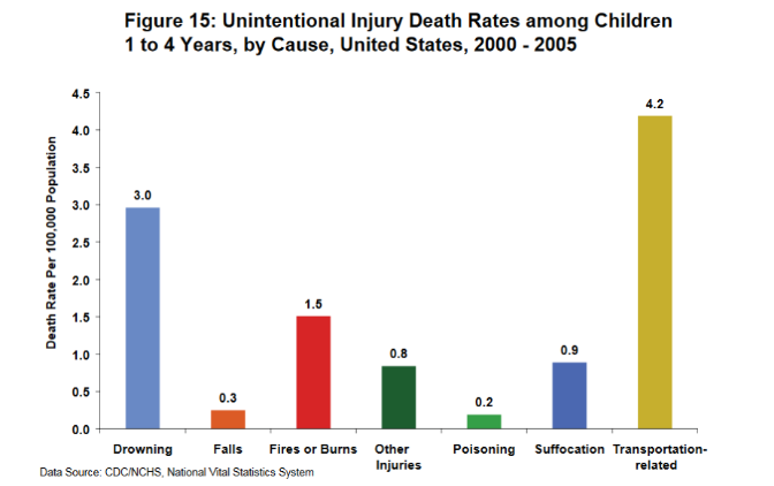"The 3-year-old boy had been upstairs at home with his mother. She stepped into the washroom, and when she came out a couple minutes later, she noticed her son was gone.
Panicked, she instinctively ran to the family swimming pool, where she found the gate unlatched and her son floating face down in the water. Although she immediately started CPR as the ambulance raced to her home, the boy suffered extensive brain damage. He remained in a vegetative state until he passed away at age 14."
Drowning can happen to any family. It’s quick, and it’s silent. Drowning is the single-leading cause of death among children aged 1-4, and a top cause of death among teens.
Most infants drown in bathtubs and buckets, whereas the majority of preschool-aged children drown in swimming pools. The primary problem for this young age group is lack of barriers to prevent unanticipated, unsupervised access to water, including in swimming pools, hot tubs and spas, bathtubs, natural bodies of water, and standing water in homes (buckets, tubs, and toilets). The Consumer Product Safety Commission (CPSC) found that 69% of children younger than 5 years of age were not expected to be at or in the pool at the time of a drowning incident.

Talking with Families
Parents tend to over estimate their child’s ability to swim especially in open water. Caregiver surveys have also found that parents believe:
- Swimming lessons are the best way to prevent drowning
- Children, including toddlers, could learn to save themselves if they fell into water
- It is more important to develop swimming ability rather than rely on adult supervision.
Bright Futures and the AAP Prevention of Drowning policy statement recommends providing water safety anticipatory guidance routinely in well child care beginning in infancy. Explore the key messages particular to the 2month visit through early childhood below. Supporting family resources can be found in the AAP Drowning Prevention Campaign Toolkit.
Key Messages
- At this age your child loves to play in water. Always supervise your child near water including during bath time, wading or swimming pool, or even near buckets of water.
- Keep bathroom doors closed and empty buckets of water. Your child can drown in less than 2 inches of water.
- Stay within an arm’s length of your child around water even if your child knows how to swim.
- If you have a swimming pool, fence it on all 4 sides with a fence at least 4 feet high, and be sure the gates are self-latching. If possible, lock doors that could lead to the pool area. Most children drown when they wander out of the house and fall into a pool that is not fenced off from the house. You cannot watch your child every minute while he or she is in the house. It only takes a moment for your child to get out of your house and fall into your pool.
“Parents revealed some of the reasons they hadn’t enrolled their children in swimming lessons yet. Many told me that because they never learned to swim themselves, they were afraid of water and didn’t encourage their children to get into lessons.” – W. Steen James MD, FAAP, Counseling Families About Water Safety a Matter of Practice Quality
It is also important to be aware of the leading causes of drowning in your community and/or state. Prevention guidance should be tailored to caregivers based on these issues. Check with your state Department of Public Health and state Child Death Review teams for detailed prevention recommendations.
Explore the AAP recommendations:
Last Updated
01/04/2022
Source
American Academy of Pediatrics